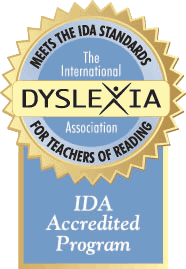How long a student will need specialized instruction depends on the severity of the problem and the frequency and length of the sessions. At a minimum, one-hour sessions should occur two times per week; optimally, four or even five sessions should be scheduled per week—for up to two hours. Instruction should continue until the student is functioning at a level of independence commensurate with age and cognitive ability. This could take two to three years or more. To master skills and apply them independently, students with a language-based learning disability, including dyslexia, need explicit instruction and consistent practice and repetition with teacher guidance—not only with development of skills but with application of these skills at higher and higher levels of functional use.
Teaching reading and other written language skills to students with dyslexia and related disorders is not a quick fix. It is hard work, and sometimes students complain about how difficult it is. At the same time, however, the students themselves are the best judges of the effectiveness of the program. Students quickly become aware that the systematic strategies they are learning allow them to identify or spell words they could not previously read or spell. They recognize their newly-learned ability to “figure out” what they could only guess previously. Although progress is often slow at the beginning, it will give them hope and motivate them to do their best and to keep trying. Significant progress becomes evident when appropriate instruction is delivered with fidelity, meaning with close adherence to the instructional guidelines of a particular Structured Literacy program, and when the instruction occurs with the necessary intensity (length and frequency of sessions; individual and small group instruction) and duration (how long instruction occurs over the months and years to come). Appropriate instruction for students with dyslexia and related language disorders is a process, not a product. For the student with dyslexia, it can be an important initial step toward a lifetime of learning.






